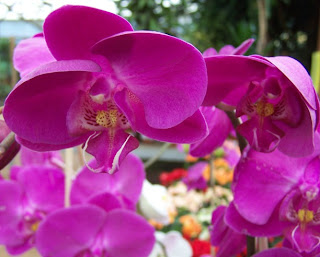
For the identification of insects and other fauna and flora of South Africa.
Sunday, December 28, 2008
Tree frog
I came home late and in the pitch dark heard a noise on the stairs. What a fright!! I dashed inside to get my camera and a light and saw this cute tree frog there. He probably got a bigger fright than I did. LOL!!


Saturday, December 27, 2008
Common Rose Aphid
Thursday, December 25, 2008
Orchids 2
In South Africa, we do not have snow, mistletoe or any of the traditional things associated with Christmas, so I decided to post some of my favorite flowers to share with everyone




Tuesday, December 23, 2008
Sunday, December 21, 2008
Kori Bustard
Today I going to surprise everyone by posting a bird!! LOL!!
This is a Kori Bustard and is slightly bigger than a turkey. It eats a wide variety of animals and plant products, often eating hard materials, such as stones, pieces of bones and even bullet shells and broken glass! The male does a courtship display to multiple females, after which it mates with some of them.
 The 1-2 chicks are able to fly when they are 3-4 months old, but they remain dependent on their mother until the following breeding season, when they are 12-18 months old.
The 1-2 chicks are able to fly when they are 3-4 months old, but they remain dependent on their mother until the following breeding season, when they are 12-18 months old.
This is a Kori Bustard and is slightly bigger than a turkey. It eats a wide variety of animals and plant products, often eating hard materials, such as stones, pieces of bones and even bullet shells and broken glass! The male does a courtship display to multiple females, after which it mates with some of them.
Subscribe to:
Posts (Atom)















